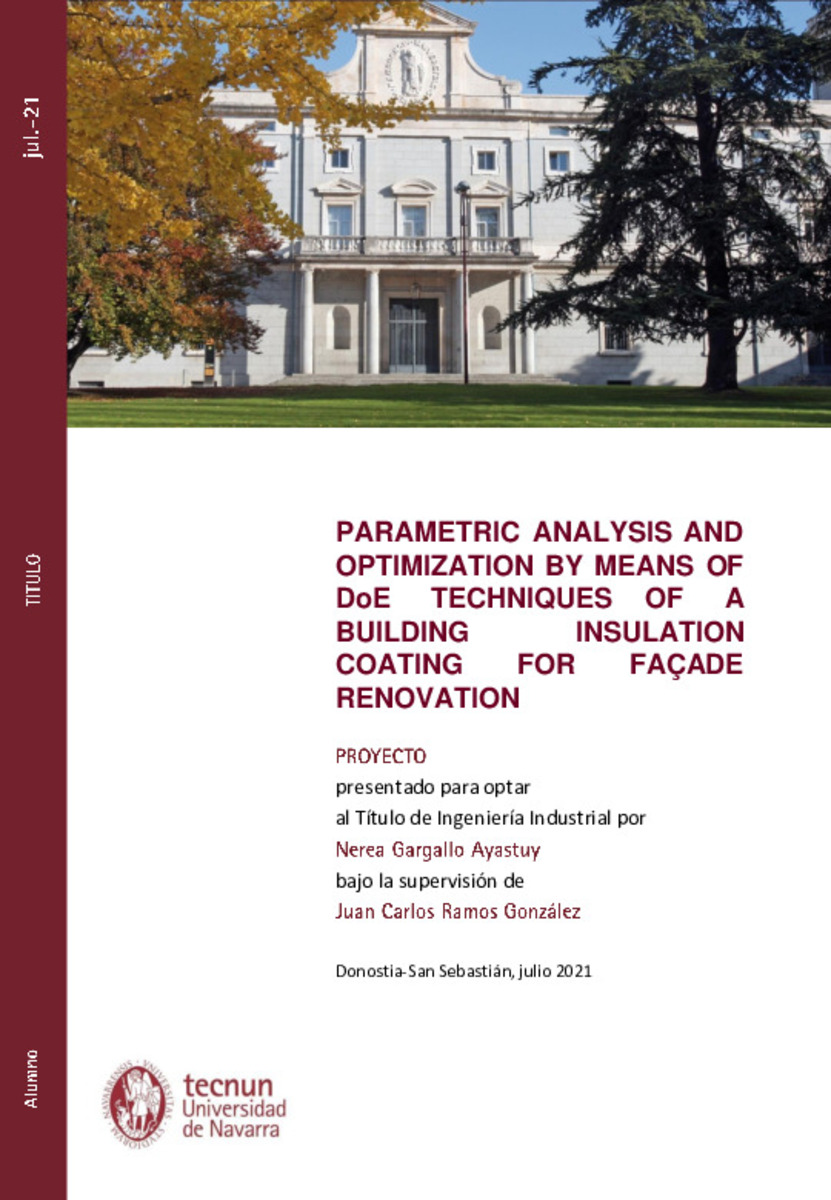Parametric analysis and optimization by means of DoE techniques of a building insulation coating for façade renovation.
Palabras clave :
Energy efficiency.
Building insulation coating.
Passive systems.
Optimization.
Análisis paramétrico.
Diseño de experimentos.
Fecha de publicación :
jul-2021
Fecha de la defensa:
20-jul-2021
Editorial :
Servicio de Publicaciones. Universidad de Navarra
Cita:
GARGALLO, Nerea. "Parametric analysis and optimization by means of DoE techniques of a building insulation coating for façade renovation." Ramos, J.C.(dir.). Trabajo fin de grado. Universidad de Navarra, Pamplona, 2021
Aparece en las colecciones:
Estadísticas e impacto
0 citas en

0 citas en

Los ítems de Dadun están protegidos por copyright, con todos los derechos reservados, a menos que se indique lo contrario.







